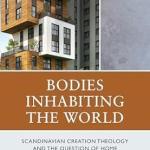
Hare Rama, Hare Krishna, Krishna Krishna, Hare Hare – I stopped and paused for a while, captivated by the soothing chants from a nearby temple. My tangles with found a solace in the harmonious sound. I drawn irresistibly, followed the chants. As soon as I stepped inside, the resonance enveloped me. I felt a wave of tranquillity was over me and I seamlessly entered a state of deep meditation.
The quest still lingers in my mind. How do these mantras weave their magic? How chanting helps achieve a deep meditative state?
Chanting: The Power of Repetition
Chanting is a form of focused-attention meditation uses a specific sound, phrases, prayers or the ‘mantra’ to produce altered states of consciousness. This can be done aloud or silently and is common in many religious traditions.
Chanting, much like meditation, can be a form of prayer, especially when the intention is to connect with the divine or seek spiritual guidance. However, it can also be a purely meditative practice aimed at mental focus and relaxation, without any direct appeal to a higher power.
Spiritual and Religious Significance:
- Hinduism and Buddhism: In these traditions, chanting mantras is a way to invoke divine energies, seek protection, or attain spiritual goals. The repetition of sacred sounds like “Om” or mantras dedicated to deities is believed to have a transformative effect on the practitioner.
- Christianity: Chanting hymns or psalms is a form of worship and prayer, creating a sense of community and shared spirituality. Gregorian chants, for instance, have been an integral part of Christian liturgical practices for centuries.
Meditation: A Path to Inner Peace
Meditation is a practice where an individual uses technique such as mindfulness, focusing the mind on a particular object, thought, or activity, to train attention and awareness. The goal is to achieve a mentally clear and emotionally calm and stable state. Meditation techniques can vary widely, including breath awareness, guided visualization, and mindful walking.
While meditation can be a form of prayer in religious contexts, where the focus might be on connecting with a higher power or achieving spiritual goals, it can also stand alone as a practice aimed at achieving personal well-being. The intention behind meditation plays a crucial role in determining its relation to prayer.
Spiritual and Secular Applications:
- Spiritual Practice: In many spiritual traditions, meditation is seen as a pathway to connect with the divine or one’s higher self. For instance, in Buddhism, meditation is a core practice aimed at achieving enlightenment and inner peace. In Hinduism, meditation is a way to deepen one’s connection with the divine and the universe.
- Non-Religious Practice: Meditation is also widely embraced as a secular practice for mental and emotional well-being. Techniques such as mindfulness meditation, popularized in the West by figures like Jon Kabat-Zinn, focus on reducing stress, enhancing focus, and improving overall health without any religious connotations.
The Role of Mantras in Meditation and Chanting
Mantras play a crucial role in bridging the gap between meditation, chanting, and prayer. A mantra is a word or phrase that is repeated during meditation or chanting. Examples of mantras include “Om Mani Padme Hum” in Buddhism, “Om Namah Shivaya” in Hinduism, and “Hare Krishna” in the Hare Krishna tradition. These mantras can serve various purposes:
- Focus and Concentration: Repeating a mantra helps in focusing the mind, making it easier to enter a meditative state.
- Spiritual Connection: In religious contexts, mantras are believed to carry spiritual power, helping practitioners connect with the divine.
- Calm and Relaxation: The rhythmic repetition of a mantra can induce a sense of calm and relaxation, reducing stress and anxiety.
Finding the Right Practice
Whether you choose meditation, chanting, or a combination of both, the key lies in finding a practice that resonates with you. Those seeking self-discovery and a deeper understanding of the mind might find that meditation offers a powerful path. Its focus on self-observation and letting go of distractions allows for a more internal exploration.
Chanting, with its versatility, can cater to different needs. If you seek a practice that combines meditation with a sense of connection, be it religious or simply with others, chanting could be a great option. It can also be a tool for focus and concentration, applicable to various aspects of life.
Inner Focus vs. Outer Devotion
Ultimately, the question of whether these practices are a form of prayer depends on your intention. If you approach them with a spirit of devotion seeking connection with a higher power, they can indeed take on a prayerful quality. However, their core value lies in their ability to cultivate inner peace, focus, and a deeper understanding of the mind.
Think of it like a spectrum. On one end, we have meditation, focusing intently on the internal landscape. Chanting occupies a broader space, encompassing both internal focus and the potential for external connection.
No matter which path you choose, the journey inwards holds immense benefits. Meditation can be a transformative tool for self-discovery, while chanting offers a versatile practice for focus, connection, and mental well-being. Whether your aim is to quiet the mind or raise it in unified devotion, both meditation and chanting provide valuable tools for navigating the ever-shifting currents of our inner world.













